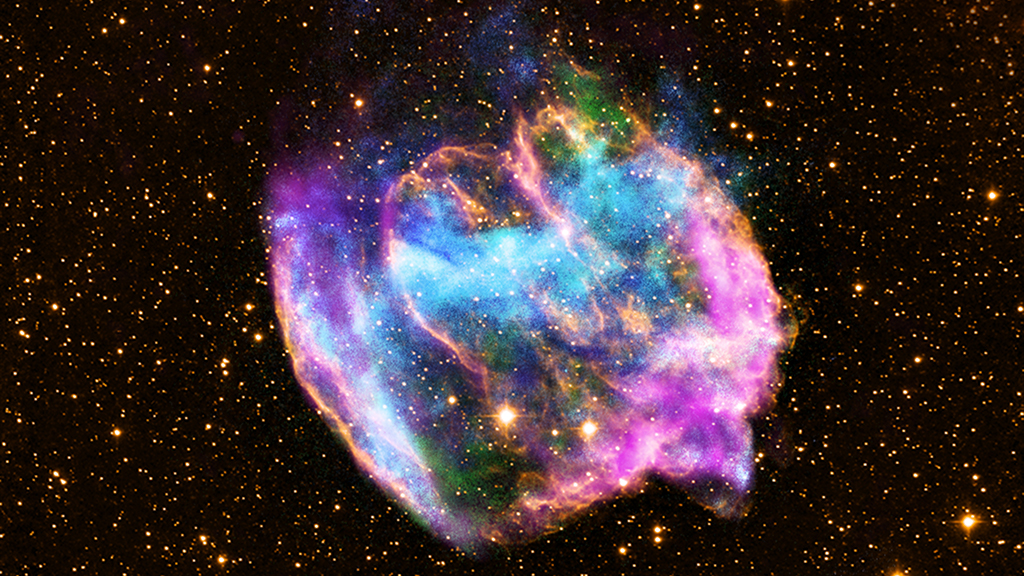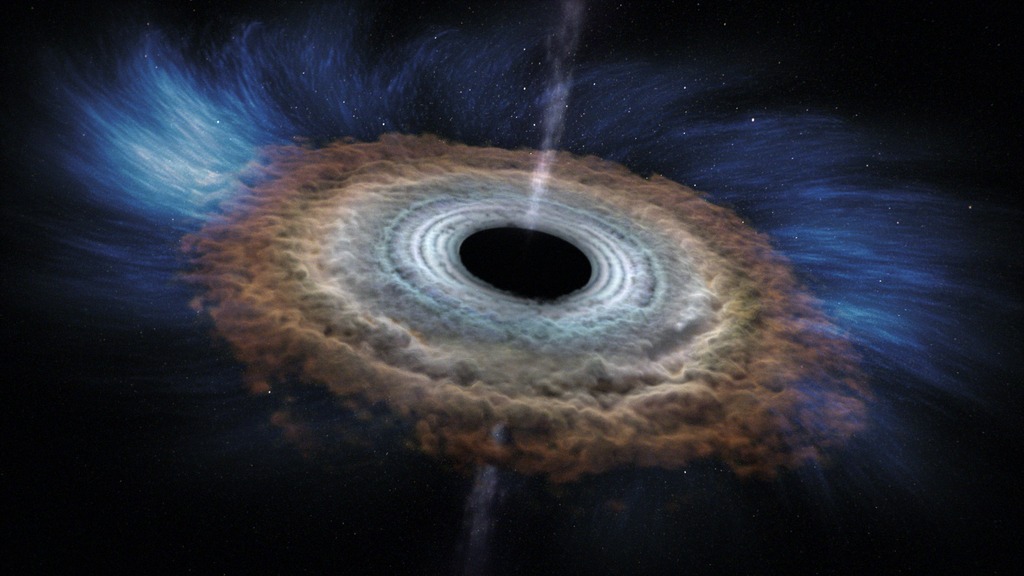Star Gives Birth to Possible Black Hole in Hubble and Spitzer Images
Music credit: "High Heelz" by Donn Wilkerson [BMI] and Lance Sumner [BMI]; Killer Tracks BMI; Killer Tracks Production Music
Watch this video on the NASA Goddard YouTube channel.
A team of astronomers at The Ohio State University watched a star disappear and possibly become a black hole. Instead of becoming a black hole through the expected process of a supernova, the black hole candidate formed through a "failed supernova." The team used NASA's Hubble and Spitzer Space Telescopes and the Large Binocular Telescope to observe and monitor the star throughout the past decade. If confirmed, this would be the first time anyone has witnessed the birth of a black hole and the first discovery of a failed supernova.
Read the NASA web feature here.
Find the full image release package at HubbleSite.org.
Read the full science paper in the Monthly Notices of the Royal Astronomical Society.
Animated graph - Visible and infrared lightcurve of the star/black hole N6946-BH1
Animated graph - Visible lightcurve of the star/black hole N6946-BH1 with Hubble image insets
Credits
Please give credit for this item to:
NASA's Goddard Space Flight Center
-
Producer
- Katrina Jackson (USRA)
-
Host
- Katrina Jackson (USRA)
-
Editor
- Katrina Jackson (USRA)
-
Animator
- Walt Feimer (KBR Wyle Services, LLC)
-
Scientist
- Scott Adams (CalTech)
Release date
This page was originally published on Thursday, May 25, 2017.
This page was last updated on Wednesday, May 3, 2023 at 1:47 PM EDT.
![Watch this video on the NASA Goddard YouTube channel.Music credit: "Reborn" by Maksim Tyutmanov [PRS] and Victoria Beits [PRS]; Atmosphere Music Ltd PRS; Score Addiction; Killer Tracks Production Music](/vis/a010000/a012900/a012907/hubble_galaxy_without_dark_matter_thumbnail.png)
![Watch this video on the NASA Goddard YouTube channel.Music credit: "Space Cake" by Donn Wilerson [BMI] and Lance Sumner [BMI]; Killer Tracks BMI; Killer Tracks Production Music.](/vis/a010000/a012700/a012724/Hubble_comet_K2_thumbnail.png)
![Music credit: "Stealth Car" by Tom Sue [GEMA] and Zac Singer [GEMA]; Ed. Berlin Production Music/Universal Publishing Production Music GmbH GEMA; Berlin Production Music; Killer Tracks Production MusicWatch this video on the NASA Goddard YouTube channel.](/vis/a010000/a012500/a012539/hubble_rogue_black_hole_thumbnail2.png)


